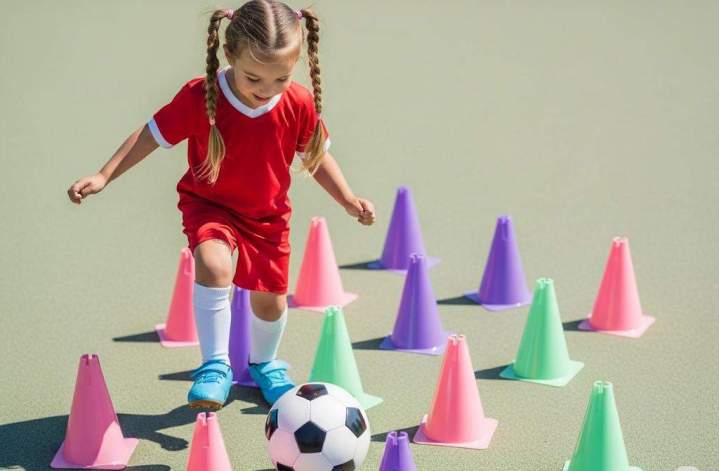Football Training for Kids: Developing Technique
Football Training for Kids Admin / August 9, 2025

Understanding Technique in Football
In football, technique refers to the ability to control the ball, execute passes, dribble, shoot, and defend with precision and efficiency. Good technique allows players to perform under pressure, make smart decisions, and enhance their overall performance on the pitch.
Why is Technique Important?
-
Mastering ball control is fundamental. It allows players to handle the ball confidently, setting the stage for successful dribbling, passing, and shooting.
-
A player with solid technique can make quick decisions, understanding the best action to take in various game scenarios.
-
Proper technique reduces the risk of injuries by promoting safe and effective movement patterns.
-
As children develop their skills, their self-esteem and confidence grow, encouraging them to take on challenges both in and out of the game.
Key Areas of Focus in Technique Development
Dribbling Skills
Dribbling is a crucial skill that allows players to navigate through opponents. Here are some drills to enhance dribbling skills:
-
Cone Dribbling: Set up cones in a straight line and have players dribble in and out, focusing on close control.
-
1v1 Challenges: Pair players up for one-on-one dribbling contests to improve their ability to take on defenders.
Passing Techniques
Accurate passing is vital in football, facilitating teamwork and strategic play. Coaches should focus on:
-
Short Passes: Encourage players to use the inside of their foot for short, accurate passes.
-
Long Passes: Teach players how to use the laces for long passes, emphasizing proper body positioning and follow-through.
Shooting Mechanics
Shooting is often the most exciting aspect of football. Proper technique can significantly enhance a player’s goal-scoring ability. Key components include:
-
Foot Placement: Players should learn to strike the ball with the correct part of their foot for different scenarios (e.g., instep for power shots, side foot for precision).
-
Body Positioning: Emphasize the importance of balance and body position when taking a shot.
Incorporating Fun into Training
Games and Competitions
To make technical training enjoyable, incorporate games that focus on skill development. For example:
-
Create teams that compete in dribbling and passing relay races.
-
Set up targets in the goal and challenge players to hit them from various distances.
Small-Sided Games
Playing small-sided games (e.g., 3v3 or 4v4) allows players to get more touches on the ball, fostering both skill and decision-making in a fun environment.
The Role of Coaches and Parents
Coaches
Effective coaching is essential for developing technique in young players. Coaches should:
-
Provide constructive feedback during practices.
-
Set realistic goals for skill development tailored to each child's ability.
-
Foster a positive and inclusive training environment that encourages experimentation and learning.
Parents
Parents play a supportive role in their child’s football development. Key ways they can help include:
-
Encouraging practice at home, such as dribbling and passing against a wall.
-
Attending games and supporting their child, fostering a love for the game.
-
Promoting a healthy balance between training, rest, and other activities.
Developing technique in football is a multi-faceted approach that requires patience, practice, and a supportive environment. By focusing on essential skills such as dribbling, passing, and shooting, and incorporating fun training methods, coaches and parents can help young players enjoy their football journey.
